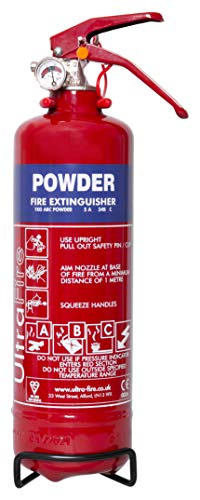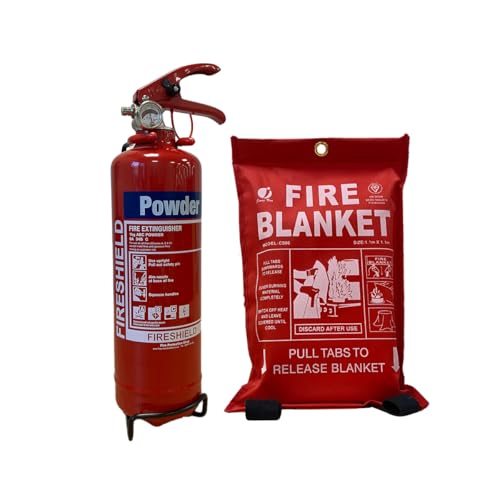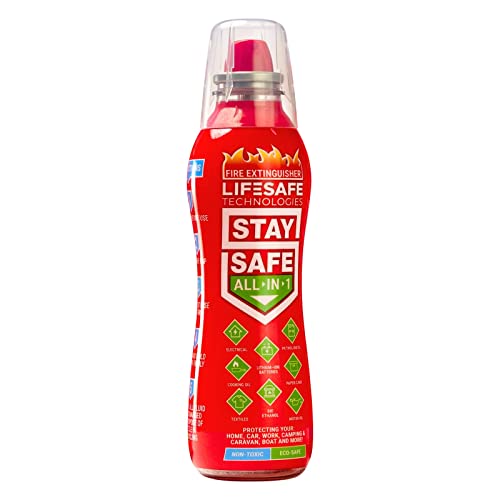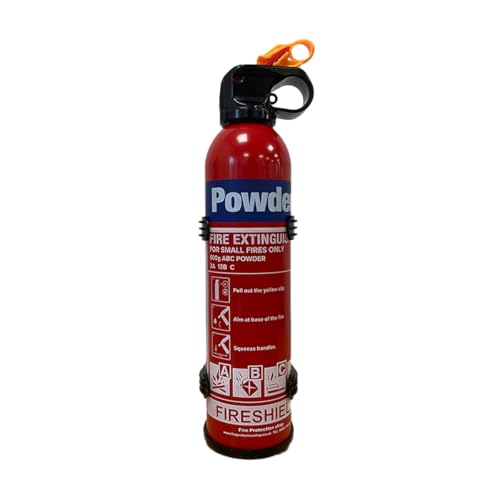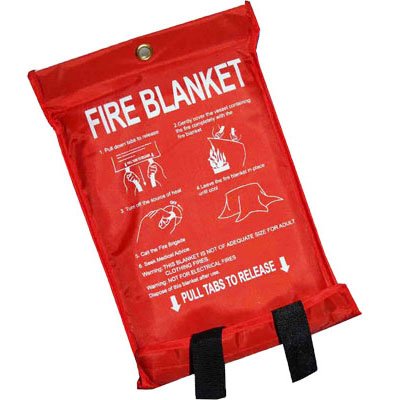Kitchens are the most common area where house fires start in the UK, there are many fire risks present in them. That means having the correct kitchen fire extinguisher to deal with identified fire risks is a must so you can be prepared to deal with a blaze.

In this guide, we explore the best fire equipment for kitchens, with an emphasis on large commercial kitchens. However, with many people running a business from their domestic kitchen, or simply wishing to improve domestic safety, we also look at extinguishers for smaller settings.
Kitchen fires have the potential to go from small to huge almost instantly. The presence of flammable liquids such as cooking oil, and risks from events such as chip pan fires means fire risk should be carefully managed.
Having the right fire extinguisher within reaching distance can prevent real damage. It is vital to use the right type of extinguisher or fire blanket when dealing with kitchen fires. The wrong type of equipment can make the fire much worse, for example using a water extinguisher on an oil fire.
Types of Fire Extinguisher for Kitchens
Types of Fires in Commercial Kitchens
There is the potential for any fire in a commercial kitchen to cause extensive damage. Equipment, oils, and fats are all dangerous and must be tackled correctly when they are on fire.
Fire risks in commercial kitchens include:-
- Oil and grease fires can happen very quickly, and appliances such as deep fat fryers contain a large volume of potentially flammable liquid. This is the most common fire risk in any commercial kitchen. A wet chemical fire extinguisher is the only kind of equipment that should be used in this type of fire – class f.
- Faulty electrical equipment. Improperly maintained or checked electrical equipment can cause electrical fires. Appliances can also fault out at any time. If you have a lot of large electrical appliances in your kitchen, you should have the appropriate electrical fire extinguisher. Using the wrong type of extinguisher on an electrical fire can make the blaze much worse.
In a commercial setting, everything is much bigger – including the a fire if one should break out. You should conduct an appropriate fire risk assessment in your premises to make sure you have the correct firefighting equipment.
See also: Fire extinguisher regulations uk – our guide on workplace fire equipment law.
Types of Fires in Domestic Kitchens
With kitchens being the main source of fires in houses, it is important to understand all the risks.
If you are using your kitchen for a small business, it increases the risk of fire. The fire risks in domestic kitchens are similar to those in commercial environments.
For example:-
- Oil and grease fires – if you’re regularly using a chip pan or fry a lot of food, you should consider a wet chemical fire extinguisher. These are specially designed to tackle fires involving oil and grease. Using water on this type of fire is very dangerous and can result in a fireball.
- Electrical fires – small electrical appliances can fault out and cause a fire.
- Fires involving other flammable materials – such as tea towels or kitchen roll.
To be covered in all eventualities, it is important to make sure you have the right fire extinguisher to deal with kitchen fires. In most domestic settings, a water mist extinguisher and fire blanket will be enough to deal with fire risks.
Types of Kitchen Fire Extinguisher
kitchens have a variety of fire risks. That means it is important to purchase a kitchen extinguisher to cover all possible scenarios.
The fire extinguishers best used in kitchen fires are:-
Wet Chemical Fire Extinguisher
A wet chemical extinguisher tackles any fires fuelled by cooking oil and grease.
Wet chemical extinguishers are the most commonly used in catering environments. This type of extinguisher is also known as a Class F extinguisher. It gets to work on the fire by creating a foam on top of the flames which smothers the oxygen supply.
At the same time, the foam instantly cools the fire which reduces the risk of reignition. Wet chemical extinguishers can also be used on Class A (solid combustibles) fires.
Water Mist Fire Extinguishers
Water mist fire extinguishers are a new type which work effectively on most kitchen risks.
They work by releasing a mist of water droplets, meaning they are safe on appliances too. They cool the fire instantly, killing off the heat supply. Water mist extinguishers can be used on all classes of fires, except Class D (flammable metals).
Water mist extinguishers have been tested on small deep fat fryers and frying pans. However, they are not recommended for commercial settings. There is a risk of reignition when using this type of extinguisher on burning oil.
See Also: Fire Extinguishers Colours – a guide to identifying different extinguisher types from labels.
Fire Blankets
You can use a fire blanket in a kitchen fire providing it is safe to do so.
It is important to assess the situation first to gauge whether the fire is too big for a blanket. The blankets are designed to effectively smother the oxygen supply.
They are most suited to frying pan and deep fat fryer fires that have not yet spread beyond the appliance. Blankets are appropriate to use on Class A, B and D fires.
How to Prevent Kitchen Fires
Prevention is key when it comes to remaining safe in a kitchen environment. Both domestic and large commercial kitchen environments pose many fire hazard risks.
When you undertake additional safety measures, you will help keep the area and workers safe.
You can help to prevent fires in the kitchen by:
- Making sure all smoke alarms work by checking them regularly.
- Keeping all appliances clean.
- Regularly checking equipment for faults.
- Never leaving hot pans unattended.
- Heating oil and fat slowly.
- Keeping the workspace clutter free.
- Making sure flammable materials are kept away from heat sources.
- Wearing appropriate clothing.
- Having the appropriate fire equipment nearby.
FAQs
For a domestic kitchen, you should use a water mist fire extinguisher. A fire blanket is also useful for small fires involving chip pans.
For a domestic kitchen, you can use a small 1 litre extinguisher. For larger kitchens, you will need anything from a 3 litre and upwards.


